#historical prisons
Explore tagged Tumblr posts
Text

Australian soldiers enjoy a moment together after being liberated from a Japanese concentration camp (1945)
#concentration camp#japan#1945#1940s#ww2 photo#ww2 germany#second world war#world war 2#wwii#ww2 history#far right#hate crimes#naziism#historical photos#history#history photos#world war two#sealed in time#black and white#black and white photography#black & white#b&w#b&w photography#worldwar2photos#pow#prisoner of war
209 notes
·
View notes
Text
EESU State Security interrogation tools: barbed wires.

Aside from keeping State Security areas safe and escape-proof, barbed wires can be used at interrogations in a variety of ways. A wire can induce pressure on the skin, causing immense pain and discomfort, and break it if scratched or pressed hard enough, thus increasing the likelihood of confession.
Common techniques include:
- Barbed wire restraint: used with or in place of regular restraints, it puts pressure on the skin to the point of tearing it, especially during movement. For better effect combine with physical contact or threats; put the detainee in a position where they are more likely to move or struggle.
- Barbed wire whip: use a whip with several parbed wire pieces on the end. The whip can be as well demonstrated as a threat if the detainee is found affected by it.
- Barbed wire bat: same as the above.
- A detainee can be forced to lay down on barbed wires then walked of stamped on. It is recommended to tie them down beforehand to avoid needless resistance.
- A wire can be heated or cooled for extra discomfort.
Barbed wire use is very likely to leave body marks, some of which can last even after the detention ends. Wires are thoroughly disinfected before use unless the possibility of infection is intentionally permitted (for non-predesignated class IV offenders only) yet the wounds can get infected afterwards.
Applied to class III-IV offenders.
Art tag: @painful-pooch @prismpanic @generic-whumperz @suspicious-whumping-egg @onlywhump @whumpedydump @whumpthefifth @monarchthefirst @sunshiline-writes @project-xiii @3-2-whump @unforgivenn
#whump#whump community#whumpblr#historical whump#totalitarian whump#interrogation whump#prison whump#captivity#whump ideas#whump stuff#torture whump#whump art#whump idea#whump drawing#whump torture
65 notes
·
View notes
Text
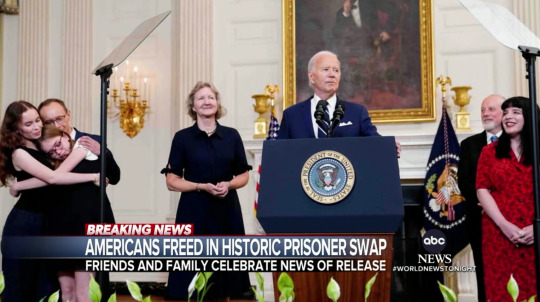
PRESIDENT BIDEN BRINGS THEM HOME




PAUL WHELEN



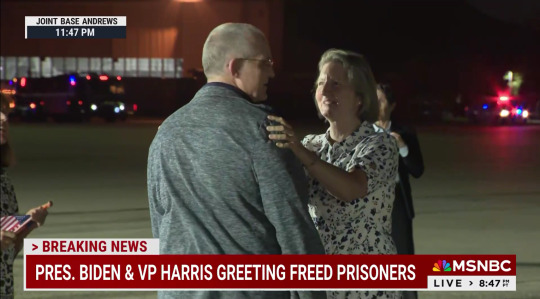

AFTER 5 AND A HALF YEARS IN PUTIN'S RUSSIAN PRISONS

EVAN GERSHKOVICH NEW YORK TIMES REPORTER

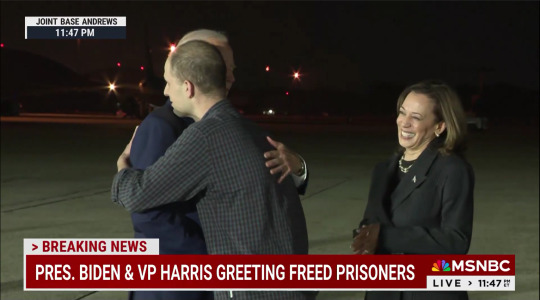

ALSU KERMASHIVA 288 DAYS AS A POLITICAL PRISONER



PRESIDENT BIDEN'S LAPEL PIN OF AN AMERICAN FLAG

IN TIME FOR A LITTLE GIRLS 13TH BIRTHDAY WITH HER MOM

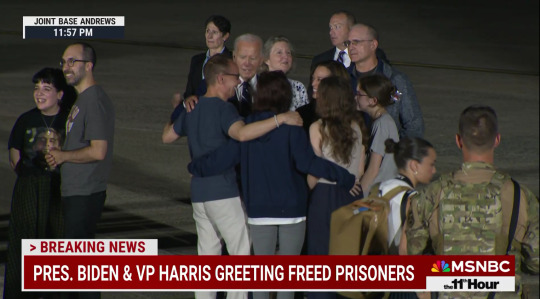
PRESIDENT JOE BIDEN'S HISTORIC DIRECT DIPLOMACY
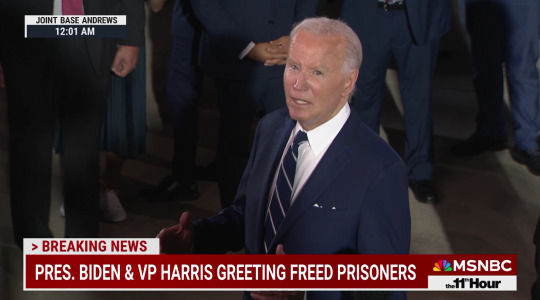
#PRESIDENT JOE BIDEN#BIDEN BRINGS THEM HOME#JOE BIDEN#DIPLOMACY#PRISONERS#PUTIN#POLITICAL PRISONERS#HOSTAGES#PRESIDENT BIDEN#KAMALA HARRIS#KAMALA#PAUL WHELEN#EVAN GERSHKOVICH#NEW YORK TIMES REPORTER#ALSU KURMASHEVA#VLADIMIR KARA MURZA#HISTORIC#PRISONER SWAP#MULTINATIONAL
74 notes
·
View notes
Text
The fun part about this event is people who aren't into digging into bizarre and fun historical topics finding out about two of my favorite philosophical things and that's:
A. The Cave Allegory
and
B. Pythagoras' wild ass cult about numbers. Y'all, this man got major beef with the number 3 like there's no tomorrow. Also beans.
#reverse 1999#the prisoners in the cave#i love this game and i hope they continue to add in more historical events that maybe even I'm not aware of#it oddly engages you to look into fun historical facts about society during that time as well different cultural contexts in that era
126 notes
·
View notes
Text
Seeing some posts about how Anne Bonny and Mary Read were historically lesbian pirates and I hate to be a wet blanket but it's a bit less clear cut than that. I have a longer post on this topic but the TLDR is that an 18th century writer claimed they fell in love, based on seemingly nothing, probably to sell more books. Its possible they really did fall in love but there is no evidence outside of this one guys claim and we know almost nothing about their actual relationship. The stories in these 18th century books played a large role in the formation of the pirate myth which is why many people will tell you that Anne Bonny and Mary Read were lovers. However its more mythology than history.
#our flag means death#historical fiction#also them living together how we see in OFMD is historically impossible because they met on Jack's ship#and were arrested while serving on his ship and Mary died in prison#you're probably better of assuming that if its on OFMD it didn't happen than assuming it did tbh
207 notes
·
View notes
Text

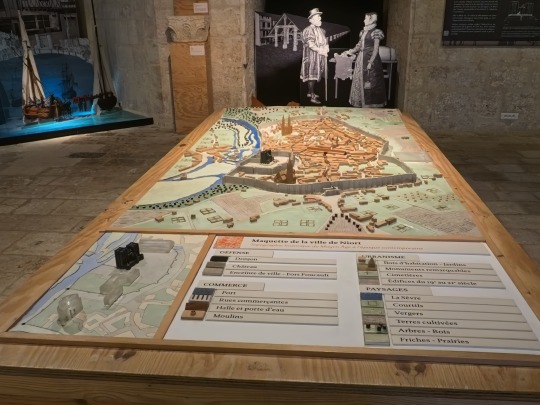
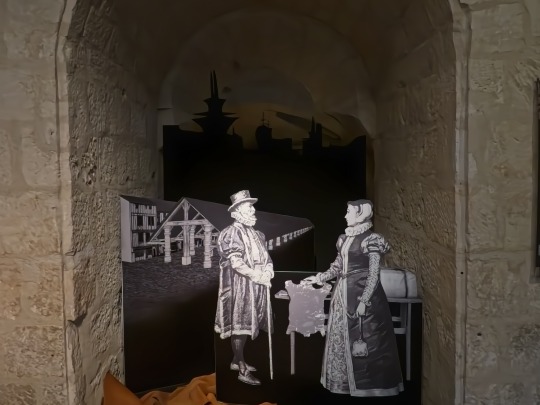

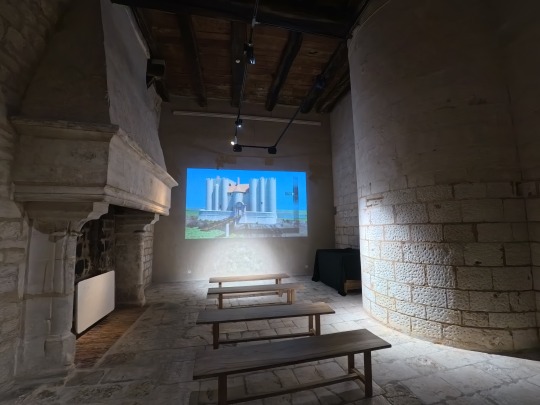
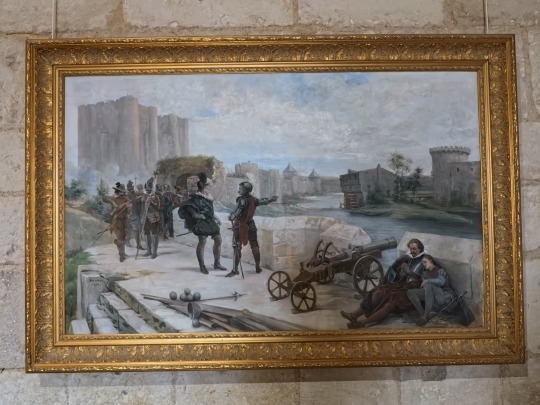

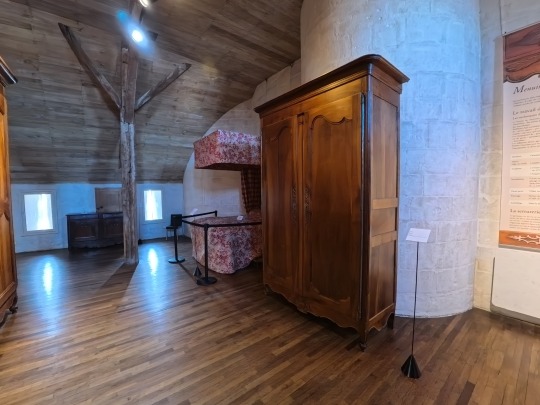


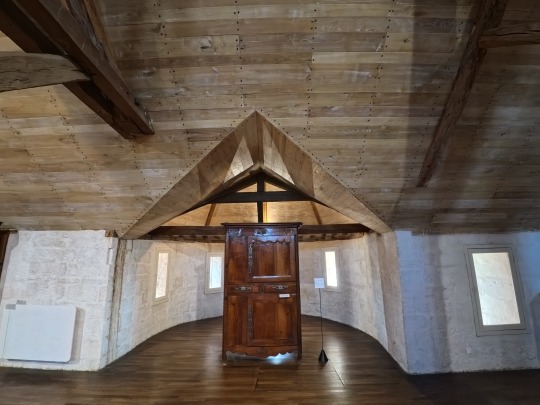
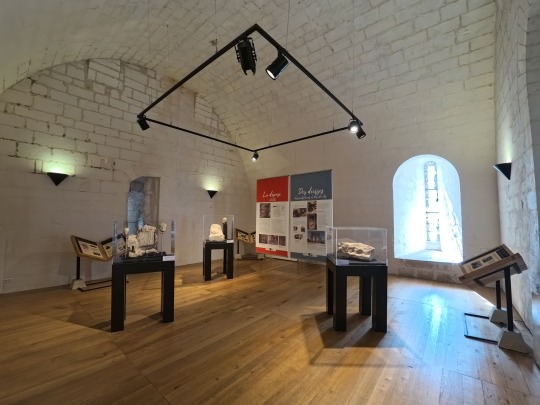


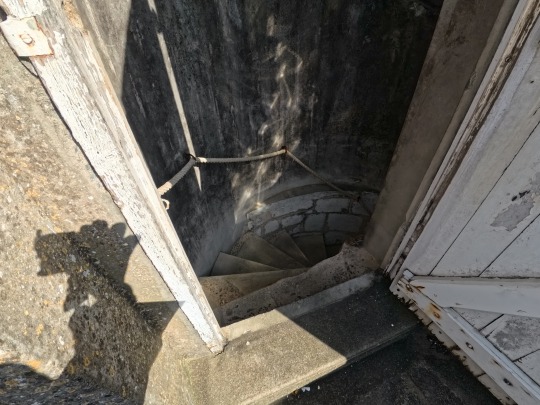
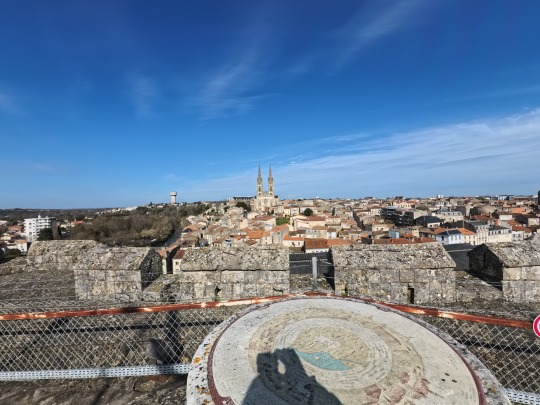

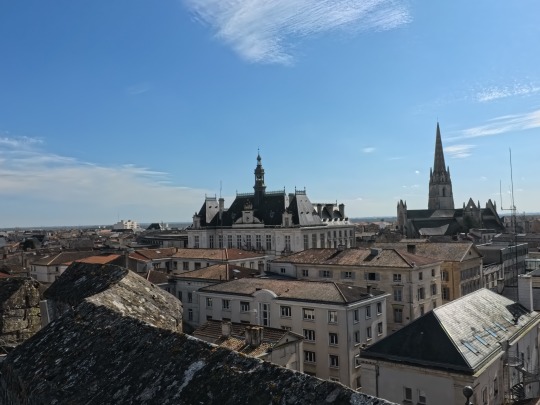





Exploration du donjon de Niort : une ancienne prison Vidéo:
youtube
#visite#donjon#chateau#prison#touristique#tourisme_niort#histoire_niort#decouverte_niort#niort#explorationintrigante#tourism#france#exploration#youtube#photography#explore#histoire#historic#history#tourisim#Youtube
77 notes
·
View notes
Note
Why do you, as a marxist, talk like a liberal




#sarahposts#liberals love to be like “we need to abolish the police and prisons and the military industrial complex and borders and tax the rich at 99%#liberals love to say shit like “no war but class war”#liberals are always saying to me “any progressive movement is doomed without a militant vanguard like the black panther party”#i mean i just can't get liberals to shut up about “we need universal free healthcare housing education and transportation NOW”#seriously someone stop liberals saying “if the world waged war against the usamerican empire it would be justified and a historic good”#i am seriously up to my ears in all these toothless liberal platitudes
23 notes
·
View notes
Text
Okay okay new flekille angle... Fleki joking about being a "dark elf" and Marcille being uncomfortable about it... Fleki saying it and teasing with it BECAUSE it makes Marcille unsure and uncomfortable.
No because okay okay rundown : 'dark elf' is a catch-all term for elves who show unsavory behavior or commit wrong actions, wether violence, theft, scamming or lying... It being a shorthand for criminals in general is a safe assumption to make, especially since they're classically demonized already.
"Okay but Fleki? Run me through the situation what does it have to do with flekille." Short sociology lesson, because of urgent needs being unable to be met through honest means & with the system favoring others instead, people from poorer more neglected social classes tend to fall into crime & bad crowds more easily. Having less ressources means the 'solutions' you do have are more extreme, wether it be for regulating your mental health or stabilizing your income or living situation. Here's a study link if interested.
Why I think Fleki may have been lower class, before becoming a prisoner? Okay stay with me here, elves are very hierarchal and xenophobic, even while being colonizers. Referring to the area guide blurbs, the northern central continent (NCC) is managed with more restrictions but also more valued in general than the southern central continent (SCC), which also has a widespread elven population. It's said life is "safe and easy" in the NCC, so alongside all the noble elves we have info for come from the NCC, we can see a dynamic form where NCC continent elves are from a higher safer social class than SCC elves.
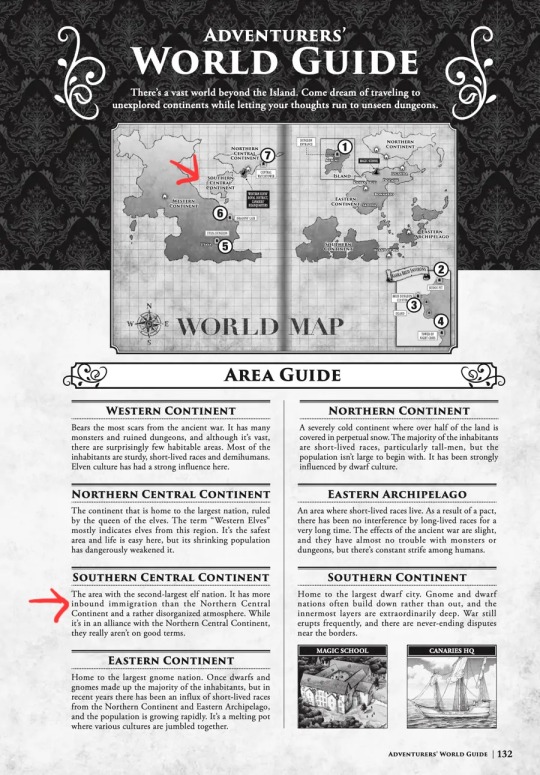

Another hint of this is the characters' names. If you compare their name origins, a pattern starts appearing where... Well @room-surprise did the work and has more knowledge than me so, the way they put it: "It seems like every elf that has a clearly Germanic or Slavic name is either a criminal or a lower-class person and everyone who is higher class seems to have names that are Latin, Greek, or West/South Asian."
And this seems like a lot of large vague groups options that don't mean much, but this tidbit of info becomes more telling when knowing which races are more associated with what languages and cultures. For a full look into it I recommend this essay, but to get to the point here concisely: 'Fleki' is old norse. 'Otta' and 'Helki' are other elves with old norse names, but for what it's worth Otta is from the NCC, and who knows about Helki's origins. They're the only elves with old norse names at all, but three's a crowd. Who else do we know are scandinavian coded? That's right, Laios and his home region. Tallmen.
Prisoner/non-noble elves tend to have old norse names while none of the noble ones do. And wouldn't that be interesting if tied with tallmen being nordic, wouldn't it be a result of the cultural mixing happening in the less rich regions and the lower social classes, since noble elves are especially xenophobic and uppity about social classes?
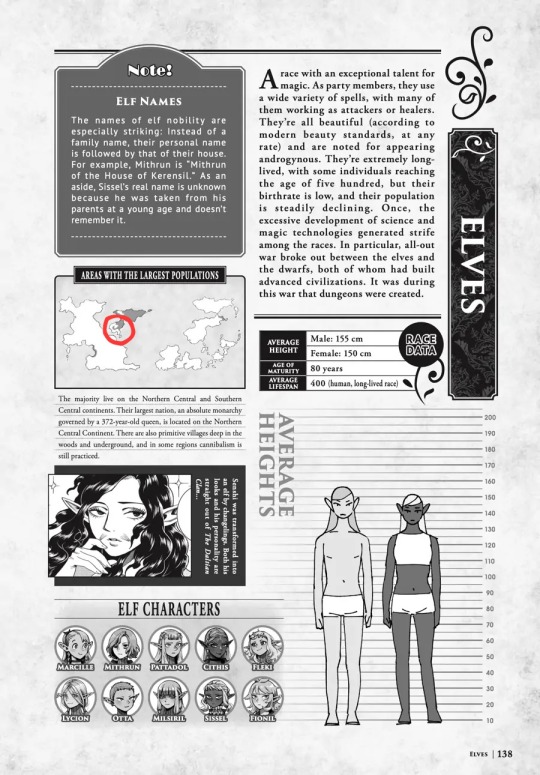
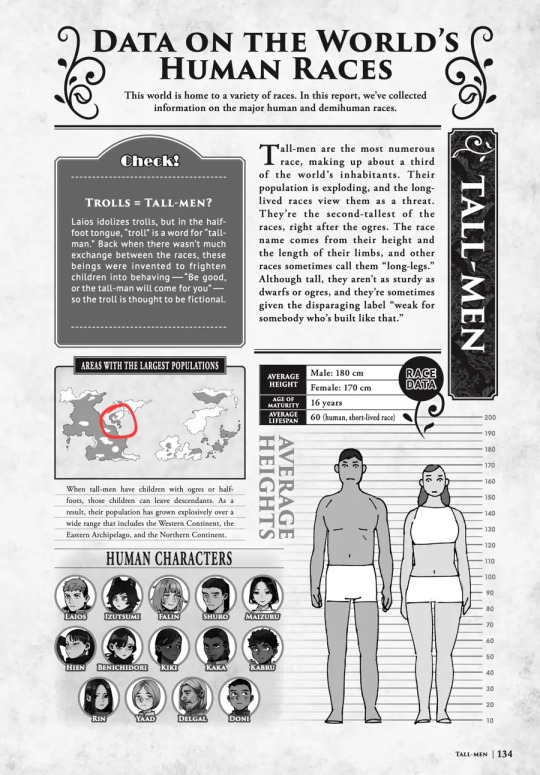
Ironically, our protagonist Laios has a greek name, something associated with elves in Dungeon Meshi, but just like Anoutolid and Nussa (two of Laios' father's dogs) could have been picked as names because Laios' father likes names from myths, with the dogs this is canon but in case of Laios it's probably more of a meta joke. ANYWAYS! Go in the essay for more info, all I'm saying is, tallmen = nordic, elves having nordic names = possible cultural mixing, on the continent that canonically has more immigration and less restrictions but is also less safe and 'easy' to live in.
Elves concentrating all their efforts and wealth into the 1% is too real and it checks out. It's also hinted at and mentioned many times through canon and extra info (Misyl's Complete Adventurer's Bible blurb for one) that the canaries overpolice and charge criminals too heavily because they lack manpower, so they want people arrested and want them arrested for longer to have more canaries. Fleki was arrested because of possession and sale of ancient magic artifacts, and only got into ancient magic for the money. Look I'm just saying, it lines up that Fleki would turn to crime because her material conditions weren't great! And as a criminal, she's automatically fit to either having been treated as a dark elf or joke and taunt about it. Especially since the lore info extra on dark elves is set somewhere where tallmen approached unfriendly elves, while this could be a tallman unused to elves outside of rumors thus approaching them with a reckless idealized view, the casualness of it makes me think this is the sort of contact that was likely to happen in an area with a lot of elves and a lot of tallmen living nearby each other, ie the SCC.
Mentioning the Mithrun-Hareus parallels AGAIN but Mithrun and the canaries directly contrast Daltian Clan, it' holds up and makes sense a result especially of Mithrun being hareus' exact lookalike. It's fantasy vs reality of Marcille idealizing Daltian Clan and elven military through General Hareus and novels growing up, then realizing that the real elven military is miserable and very much not glamorous and general Mithrun is dehydrated, rude and after her life. So this plotline about idolizing vs demonizing elves as a race, stances that are very split within the dunmeshi cast, is very Marcille-centric within canon's story. She herself goes from associating with them a lot and being prideful about it & elven customs, to condemning their superiority complex and narrow-mindedness and being on the run from the elven military, before becoming an advisor for a short-lived tallman court, which is seen as dishonorable for elves, as Marcille the half-elf. There's a bit of an arc here, regardless of how much change she actually went through or if it was always just performance on her part that she wasn't really attached to.
So obviously this is all to say that Marcille having a romance with a very underprivileged elf, a "dark elf", would be not only compelling but relevant. FLEKILLE SUPREMACY!!!!!
Half-elf woman who drank the koolaid a bit growing up and idolized elves and tried her best to fit the image of one x woman who knows personally the shortcomings of that same idolized society and embodies that a bit, who breaks that elegant image by being crass and unapologetic and a criminal prisoner, who would have no problem breaking Marcille's fantasies about it, a full elf who still grew up disadvantaged and demonized. Marcille has been emulating elves all her life, perhaps in the hopes of being accepted more or feeling a bigger sense of cultural belonging, but Fleki is there, showing her hey, it isn't that great anyways, hey it doesn't matter squat if you're an elf or not people will always find excuses to mistreat you anyways. It's Fleki taunting and saying come be dark elves with me and Marcille coming to understand and replying no, we're both just elves.
#imagine me doing Ace Attorney gestures bc this is how i feel rn. with the power of sociopolitics on our side let us make flekille romance#meta#fleki#flekille#marcille donato#Shipping is so serious to me ToT no but genuinely where else would you explore human relationships n feelings n psychology as much#Giggling kicking my feet this is again a marchil parallel. Bc marchil in canon is about this too he's at the core of her arc#It's him who talks shit about elves the most it's him that shows her the reality of people who have tighter finances#It's him that grounds her and teaches her to balance her idealism and it's to him she says elves are too prideful#But this is why i like rin x pattadol too. Woman with elf trauma wary of elves x young naive elf woman that's part of the oppressive elven#system but genuinely thinks this all good being done for the greater good#Slapping Dreaming Utopia by Ryoko Kui as sociopolitics 101 once again#for what it's worth Fleki's the one who dishonestly taunted about using politically correct terms too so she might be cheeky with dark elf#colonizers do get influenced by the culture of the people they colonize also often which is another interesting to think about with dm elve#For example both Utaya and the elves having indian coding#but again could just be historical cultural mixing since they're more or less close regionally#sweating about this post a lil ngl hopefully the bad crowd doesn't find it. Rehabilitative > punitive justice. interculturalism good.#ty that is all#elven prisoners becoming soldiers is kinda like LA prisoners becoming firefighters huh.#thinking once again about Cithis having a deep hatred for rich people
11 notes
·
View notes
Text

Former medieval prison in Pézenas, Languedoc region of France
French vintage postcard
#postal#medieval#france#pzenas#historic#french#pézenas#ansichtskarte#sepia#vintage#tarjeta#languedoc#briefkaart#photo#postkaart#ephemera#postcard#postkarte#photography#prison#region#carte postale
10 notes
·
View notes
Text
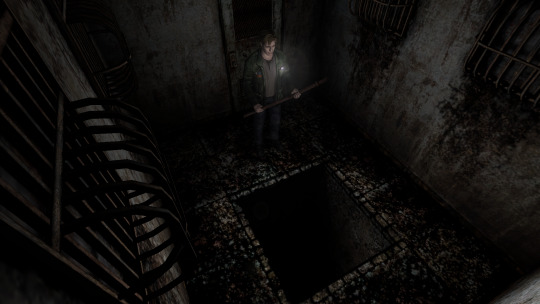
Will you go down?
#silent hill#sh2#silent hill 2#james sunderland#sc#toluca prison#silent hill historical society#horror#horror games#ps2#2000s#retro games#*
110 notes
·
View notes
Text

360th Prisoners of War Company. A goal scored against the British escort at football; 1919.
#POW#prisoner of war#the great war#historical photos#the first world war#world war one#world war 1#history#1917#canadian history#wwi#ww1#world war 1 stories
41 notes
·
View notes
Text
To the end of the year
"We are here to congratulate everyone for the biggest, most joyful and wondrous holiday in our country. Wishing you lots of love, happiness, good health and prosperity for you and our people.
Fight for our peace and protect our socialist values with your life. The traitors will fall, we will prevail! Here, take some cards. They may be old but I hope you remember them with the best moments of your lives.
Happy New Year, comrades!"
- János Varga, Minister of State Security
31/XII - ****









Art tag: @painful-pooch @prismpanic @generic-whumperz @suspicious-whumping-egg @onlywhump @whumpedydump @whumpthefifth @monarchthefirst @sunshiline-writes @project-xiii @3-2-whump @unforgivenn
#whump#whump community#whumpblr#historical whump#totalitarian whump#prison whump#spy whump#lab whump#please don't k me for the tags
30 notes
·
View notes
Text

An interview with Peter Gelderloos
– So, first of all I think this is what we’re generally going to be talking about: the topics of violence, non-violence, diversity of tactics, and all of these discussions that have been happening for quite some time in social movements. So maybe to start with it would be good to know, if you could tell us a bit, where does this debate come from? What’s the history? Why is it such a divisive issue, and a bit of history of this conversation that has been happening.
For starters, when we talk about non-violence, we’re talking about an exclusive practice that tries to only allow tactics or methods that they define as non-violent. And so the counter to that: not violence, but a diversity of tactics, and a diversity of methods, and beliefs and strategies, without an obsessive focus on often moralistic definitions of whether or not a specific action is violent.
There are as many histories to this debate as there are people who can tell it. In my experience, coming of age around the anti-globalisation movement and then the anti-war [ed. – in Iraq] movement, late ‘90s, early ‘00s, it was very much a question of a non-violent hegemony that for the most part social movements in the Global North were dominated by. Non-violent groups who often co-operated with the media and the police to prevent anyone from breaking with the action plans that they set out, or the limitations on tactics. So in that context it was very much an effort of some people to reconnect with histories of struggle that were more radical, that were more effective, and that used a very wide range of tactics. We had to break the strangle-hold on discourse, on strategy, and reconnect with these histories: which had largely been silenced.
But to be fair, there’s going to be a lot of other histories, other points that that debate comes out of. So some folks who survived certain struggles in the ‘60s and ‘70s: there were also moments of debate where maybe a specific movement was very locked into a more militaristic strategy. To me, to criticise that effectively, that’s a critique of militarism, and not of violence per se: which is of course a very vague category. But there were certainly other moments when people were getting into this debate over what tactics and strategies are appropriate from a completely different angle.
– And has it always been the case... well, not always, but in the current period has it always been the case that nation-states and other institutions, part of the establishment, have tried to use this rhetoric of labelling people violent or non-violent? Or is this a modern phenomenon?
It’s been going on for a very long time. I don’t think the word violence, the category, was used systematically to describe – or police – the actions of people in social movements until the 20th century; really especially with the popularity (particularly Gandhian) non-violence. Although certainly categories of violence were used to generate social alarm about supposed dangers to society, certainly going back to the 19th century and before.
Governments will particularly encourage people on the Right, on the right-wing, to attack other members of society who are portrayed as dangerous or disloyal. But then they’re very, very invested in policing anyone who is talking about some kind of liberatory, emancipatory, revolutionary change to society: anyone who’s talking about a world in which everyone can be free, a world in which we actually address these very deep oppressions that run all throughout our society. Anyone who’s coming at social change from that angle is of course held to these strict standards of non-violence by the media, by politicians, and by all institutions of the State.
– Although, something that we’ve seen a lot recently in some of our movements (in particular in the environmental movement, in the UK and other countries) is that activists themselves have taken this rhetoric of non-violence, and advocating it as the most effective strategy. What do you think are the main issues with this enforcement and promotion of non-violence in political movements?
Referring specifically to the newer formations in ecological movements, just the level of historical amnesia is a huge problem. And the level of disrespect to other ongoing movements. The environmental movement isn’t new, there are just some new players on the scene, that have been getting a lot of media attention. They not only have ignored a lot of historical movements that were very important, and that give us a lot of experiences that we can learn from: but they also ignore movements that are ongoing today, or that have been extremely recent: like the various ZADs in France, “zones to defend”, especially the most famous one at (pardon my French) Notre-Dame-des-Landes which stopped an airport. It stopped a project linked to one of the industries most involved in the destruction of the planet. They successfully stopped that airport project, and in the meantime all sorts of people create a completely different relationship with the land: one that’s based in knowing the land and respecting the land, becoming a part of the land rather than these sort of alienated machines that just move over and outside of nature...
That’s extremely important, that’s a major victory. And it was won using a diversity of tactics. All of the struggles against pipelines in North America, inspired by and in many cases centered on indigenous resistance... There would be a diversity of tactics there, and connected to a much longer history of struggle. Struggles in indigenous territory all over the world, shutting down mines, stopping hydro-electric dams, forestry plantations, and use a diversity of tactics...
And it’s just absolutely arrogant to come onto the scene and not connect with those other struggles, not learn from them, not engage in dialogue in them. Of course every new movement can offer something new, any new person or a group of people who starts participating in the struggle have something new to bring and they have something new to say that’s valid. But not if they’re not able to listen, not if they’re not at all interested in the people who are already out there, holding it down and who’ve been passing on experiences of how to fight back for generations.
Which is probably why exactly those movements are getting so much media attention: because they’re helping accomplish the break that capitalists need and that politicians need so that the very people and institutions who are responsible for destroying the planet can be the ones that sell us back the solutions. Which is basically green capitalism, government financing for huge infrastructure projects that will let those who already own everything profit a little bit more.
All of that’s impossible if you have a view of defending the Earth that’s sees people as a part of nature, that’s connected to indigenous struggles and worldviews, that’s connected to an anti-capitalist or anarchist analysis.
In general I think across the board, with any struggle, I think a good basic rule is: don’t trust people or organisations that don’t show solidarity with prisoners of the struggle. So there are people who are in prison right now because they’ve been breaking capitalist laws to defend a forest, to defend a swamp or a salt-marsh or a specific species, or to defend that they grow food in relation with the land, or to strike back against animal testing; or any of a number of things, there are people in prison right now for those reasons. I think the motivations of a supposedly environmentalist organisation that doesn’t even mention them, that just lets them rot in prison, are highly suspect.
– Why do you think such activist movements adopt these ideas? Are there institutions which play a role in promoting them, like NGOs, political parties, progressive media, and stuff like that? And how do they accomplish that?
That’s a problem with the Left in general. And any critique of the Left: it’s very messy. These organisations, these movements, they bring together people who are absolutely sincere – with whom it’s completely possible to be in solidarity – together with opportunists, with powerful institutions which are part of the problem, which are seeking to profit off of the problem. So it’s tricky to make these criticisms in a way that that don’t make potential allies stick closer to those who we need to fight against.
I think I need to answer that question on different levels at once. On the one hand, what’s happening to life on this planet, what’s happening to all of us, and all of the living beings that we live in relation with is extremely depressing. And when something is so depressing, when so much harm is being caused by such a huge, inexorable machine, the easiest thing is to either ignore it – just close your eyes, pull up the covers, and hope that it’ll go away – or rush to magic-wand solutions.
By a magic wand solution, I’m talking about something where we think we can just pull a lever, where we don’t have to give anything back, we don’t have to engage in any fundamental transformation, and it will just spit out a solution. So governments that have been ensuring that ecocide continues apace will suddenly be the ones who are protecting the environment; or the corporations that are making billions off of exploiting people, exploiting other living beings, exploiting the planet as a living system will suddenly start producing products that protect the planet.
That’s absurd; any reasonable person can see that that’s absurd. But all of us have a huge emotional interest in not seeing the absurdity of that because otherwise it means it’s on us. Otherwise it means we have to do the really hard work and face the very serious risks of changing this, of putting a stop to this ecocidal machine.
So people on the base; that’s on the one hand a sincere, honest mistake of why they’re supporting methods that aren’t going to help, and that might even make things worse. On the other hand, governments stay in power by mobilising social conflicts and by presenting themselves as the arbiters of social conflicts and social crises; so if anyone’s going to solve it the governments have to be at the table, they have to be able to define the process. So we get things that have really no hope of (even in terms of this very limited, technocratic focus on climate change) preventing the tipping points that we need to prevent, like the Paris Accords. The important thing is that people are spectators watching ‘their’ governments, ‘our’ governments supposedly, talk about solving those things.
Capitalism is facing a pretty huge crisis of accumulation, they need constant interventions, constant financing, constant investment opportunities. There needs to be a new industrial expansion and switch to so-called green energy, that would be certainly a great boon to capitalism. So they’re very interested in financing an environmental movement that is domesticated, that plays ball, and that aids in this more technocratic reductionist approach. Which is mostly only looking at atmospheric carbon rather than looking at the earth as an interconnected web of relationships of which we are a part; in which every single thing affects every other thing. So you can’t look at atmospheric carbon without looking at sea otter populations, without looking at hunting practices, without looking at how we grow our food, etc. etc. etc.
And you also have NGOs in there whose directors make huge fricking salaries and who are involved in genocide, like the WWF which is involved in genocidal practices in Africa; because they’re still locked into this colonial mentality where nature and humans are mutually exclusive. So they’re helping fund paramilitaries that are attacking indigenous people and kicking indigenous people off their land.
The problem’s not humans: humans have been around for a really long time. Planetary-scale ecological disaster is relatively recent problem; it’s caused by capitalism, it’s caused by colonialism. And then the regional- or continental-scale problems that you saw before that; they didn’t happen everywhere. There are plenty of human societies that still exist today that know how to exist as a healthy part of their ecosystem.
Whether we want to be or not, we are a part of the ecosystem always. We can continue to rationalise nature, to turn it into a factory and control outputs, inputs, and so forth; preserve a few spots as nature reserves that we can charge tourists money to access. Or we can actually realise that we’re a part of the earth, and we’re connected to all other living things; and to get rid of capitalism, to get rid of all the social machinery that alienates us and that prevents us from acting that way.
– Yeah, absolutely. And also in terms of how these ideas spread and what role do they play in the machinations of the State, there’s this idea of counter-insurgency that the states use in order to undermine social movements. And I wanted to know a bit, if you could talk about what that is, and how it’s related to non-violence; and how do the governments use it to accomplish their objectives?
In the science of the State, they’re studying things for social control: for maintaining and increasing their power. In the past, in the more modern period – using this Hobbsian metaphor of society as a body, with the State as its brain – peace was thought to be the natural order of society. (With the note of course that the only society they’re interested in is a society ruled by a State. So they’re ignoring the possibility that other kinds of societies.) So they were inclined by their prejudices to believe that peace was the natural state of the statist society, and so using the biologicism that was common during modernity they would look at disorder as an infection, a sickness that was caused by some agent coming from the outside.
So frequently in the late 19th and early 20th century, these police agencies that were cooperating across Europe and North America, sharing information (at that moment in particular about anarchist agitators): they frequently used the metaphor – which one gets the impression they weren’t even aware was a metaphor – of these anarchist immigrants as a pestilence, as this external sickness that needed to be expunged from the social body in order to make the social body healthy. That police philosophy and that science of social control proved again and again to be ineffective. And so finally (with the British actually taking the lead in this, primarily with their experience against the independence movements and anti-colonial movements in Kenya, but immediately connecting this to experiences and the science of social control in Ireland, in India, elsewhere; and immediately connecting other colonial/neo-colonial and settler states like France and the US), they realised that in fact it’s much more helpful and more accurate to realise that the natural condition of society under the State is constant warfare. Which interestingly enough is very similar to the idea of social war developed by the anti-authoritarian feminist André Leó, who was a veteran of the Paris Commune, a century earlier; and since then really elaborated by insurrectionary anarchists and others, this idea of social war.
So basically that’s the reality: the State is warfare against all of us constantly. States actually have to realise that their existence hinges on warfare; against their own populations. Because counter-insurgency methodology pretty much immediately was adapted by States to use against their own privileged citizen populations (privileged citizen in the sense of it was initially developed in Kenya; it as quickly brought to Brixton, Bristol, Los Angeles and Detroit). So it was never really a marginal reality for the colonies; it’s something that in a way unites how States view any of their subjects, colonial or otherwise. So they had to realise that the conflict was permanent, and that they couldn’t ever... even though they continued to use the troupe of outside agitators because it’s a good way to delegitimise people, they couldn’t actually think like that. They had to realise that they’re in constant conflict with their society, and what they had to do was manage the conflict.
So that means, for example, intelligence agencies and police agencies: sometimes they’ll let a certain amount of stuff fly. They might be doing intelligence gathering and they’ll be aware of illegal activities and decide not to arrest anyone because if you arrest people, then you’re shocking the movement; you’re giving away information on what you know. And then the movement has the opportunity to improve their security practices. Whereas if you just keep spying on them and watching, and do social mapping, then you have a better chance of knowing everything that’s going on, and your opponent – your enemy, the social movements – will hopefully (for the State) continue to be lax about their security practices.
So that’s just one practical difference that counter-insurgency strategy brings about. Basically the broad goal of counter-insurgency strategy is that conflict stays at the least level; which is non-violence. Frank Kitson, this British military figure theorised three different levels of social conflict, with the lowest being preparation, being non-violence; and the highest being full-blown insurgency. So basically the State wants to avoid the conflict getting to full-blown insurgency, which is basically the point at which all of us – all the subjects of the State – realise that we are are war, and fight back. The State would prefer for this to be a one-sided war.
And so non-violence is useful to the State within counter-insurgency methodology because it disciplines people to formulate their struggle as demands, in dialogue with the State. Which of course ensures that the State will always have a role in that: and can prevent being negated in the process of the struggle.
– This is a topic that is a bit difficult to research, because you can find out a lot of information about it online, even you can buy some of the field manuals from the US Army (you can find the PDF online, I think it’s the 3–24, something like that), or you can even buy the one that you see in NATO and all of that kind of shit. But that’s always written from their perspective. And it’s really useful to read about it, to read them to learn how they think. But also it’s difficult to extrapolate what they are actually trying to do. So what are good resources or ways that people can better understand how the State approaches these tactics; what strategies they use?
There’s a really good history of policing in the United States (although some references are made to the UK) by Kristian Williams; Our Enemies in Blue. And there are a number of... I think a lot more anarchists are starting to deploy this thinking in our analysis of ongoing social conflicts. Even the concept of recuperation which figures very heavily in [Alfredo M.] Bonanno, or in Ai Ferri Corti (At Daggers Drawn); that’s – in different language – a very direct reference to how the State works, including with methodologies of counter-insurgency. That is without a doubt useful.
There have been some essays that have been written that have been very good, analysing the anti-racist/anti-police rebellion that began (or began again) after George Floyd’s murder in the US this past summer; and which of course spread to many other places, the UK included. At the moment I can’t remember the title of the main article I’m thinking about...
– Is it one of the ones published by Ill Will Editions, maybe?
Yeah, they definitely incorporate that thinking; that would be available. And I’ll try to think of others and type them in as we go. Also if anyone out there has read anything good? That’s definitely a recent case in which people were analysing counter-insurgency strategies. Oh crap, I wrote something too, looking at how the outside agitator troupe was used to delegitimise the resistance: ‘The Other White Vigilante’. So please, anyone who’s listening, feel free to share articles or recommendations. But that lens have been very prevalent in analysing. Especially from the Left: because interestingly enough, even though the right-wing and the cops have killed several dozen people in the course of that uprising, it seems that it’s actually been the institutional Left and the centre-left that have been more effective in pacifying those rebellions.
– That’s a really interesting point. Why do you think that’s the case?
I think that’s frequently the case. The right-wing needs to make recourse to a far greater level of violence in order to just completely stamp out movements and social struggles; which of course they’ve done in the past, famously. But that level of violence and that level of murder and repression also tends to have disruptive effects on capitalism. Whereas the institutional Left is better positioned to divide and pacify the movement; at least for a while. We saw how quickly city council members and what-not went from advocating abolition to defunding the police in a month... With the institutional Left being closer to the movement (and sometimes part of the movement), they have better intelligence, they can identify different, divide the movement into sectors, identify radicals and isolate them through discourses of non-violence. Through discourses of responsible reform.
And when the movement is divided like that, and the radicals are isolated, then police repression also becomes more effective. Because the police are not very intelligent, and often the way that they direct their violence radicalises more people, encourages more people to fight back, destabilises things even more.
– Yeah, I think that’s something that is very important for people involved in social movements to be aware of. Because it’s quite disheartening for a lot of people; and sometimes hard to believe, that movements, organisations and people that you may see as your ally: they can play this role in the counter-insurgency strategy of the State. I think it’s something people should be aware of for sure. So, we’ve talked a bit about how non-violent proponents hide the history of social movements in order to make their points. But something that I think you talk about in your books is that diversity of tactics is not only something that has always been present but also that tends to be actually effective, and actually deliver better results than keeping to just non-violence, whatever that means. Why do you think it’s the case? Why do you think allowing for different strategies to exist together; why’s that more effective for social movements?
For a lot of different reasons. In situations of conflict in the streets it’s just a lot more difficult for a centralized, unified enemy – like the State, like police forces – to go up against a very complex, heterogeneous (and sometimes even chaotic) opponent; which in one place is using peaceful tactics like a candle-light vigil or a peaceful march, or shaming officers; and in another place it has a shield-line and is trying to push past the police: and in another place in engaging in running street-battles, vandalizing, looting, attacking and disappearing. That’s historically (and there’s recent examples of that as well, and old examples of that) always been much more difficult for States to go up against.
In terms of the ecosystem of a social movement, the more breadth and diversity and difference there is, the healthier that social movement is. The healthier debate there is. The more different practices you can try out at once; it can work as a laboratory. It can tackle multiple issues of the problem at the same time.
Centralised decision-making is actually very connected to unity; the unity of tactics, and the unity of strategies that the Left is usually referring to. That unity; it has to pass through some kind of centralised point of decision-making and legitimacy. And centralised decision-making is never more effective, it’s never faster: the only advantage that it has is it allows authoritarian control of a larger body, by creating a choke-point where legitimacy can be doled out.
So a diversity of tactics and methods is more effective for all those reasons and more.
– How can we prevent these institutions who spread these ideas of non-violence, who impose the ideas of non-violence; how can we keep the diversity of tactics alive and healthy in our movements? How can we promote it? What kind of strategies have you seen? What have you tried? What kind of ideas can you give us to do it ourselves?
One thing that I think is really important and I think is not thought about enough (at least in the English-speaking world), is this idea of historical memory. Which is just translating from Catalan; it’s also common in Spanish and Italian. Which isn’t this idea of history as something that lives in books but something that exists in groups, in collective sharing of experience. So in this view history is something that we have to keep alive, it’s not something to just have in archives, and in a movement that means constantly reconnecting with the past, with experiences of struggle, reconnecting with the people who survived those struggles who are still alive today, sharing stories from even older struggles. And keeping them alive, keeping them in the streets; having events about these histories of struggle and how they directly connect to the present in our social centres, in our events and so on and so forth.
I’ve noticed that non-violence – exclusive non-violence – is strongly connected to historical amnesia. It’s strongly connected to movements that forget their past. I think it’s good to check in every now and then – how many people in a movement have a good strategic memory of things that happened five and ten years ago? Whether it’s cases of repression, or a big protest movement and riot, or a particularly effective resistance, and just having conversations with folks who maybe you knew them five or ten years ago and checking in with them if they know about these arrests, if they know about those riots, if they know about such and such campaign. And if a significant number of people don’t even have a strategic memory of things that happened five and ten years ago... and by strategic memory, I mean they don’t have to be able to write a fricking doctoral thesis on it, but at least they should be able to know enough about the meaning of that event that they can use it as a strategic reference. Like, oh when that happened, it really really helped that people started having potlucks among all the friends and family members of all the people who got arrested, because it let us see each other, we could support each other emotionally, and so on and so forth.
That’s what I mean by strategic memory; at least enough details that we’ve learned something from it. If a significant number of people in a movement don’t have a strategic memory of things just five and ten years ago, then we’re in trouble. So that’s one thing, this continuity of history. I don’t know how things are in the place where everyone lives right now, but if you’re in a moment of social peace, if you’re in a moment when the State is successfully hiding, covering up the main conflicts: mostly these tactics and these strategies they live on in movements, but if there’s not a strong movement at the moment then we can do events popularising movements that inspire us. You can be inspired by the ZAD and block the airport. You can do a video-call with people who participated in the struggle at Standing Rock, or trying to stop oil pipelines and so forth. So we have to actively keep memory alive, we have to actively build relationships and build connections, they don’t just pop up by themselves. And I find that when we do that, then people are most inclined to be really aware of the tactics and methods that have been used to win the few victories that we’ve won, to protect the few things that we still have that we can call our own; whether they’re traditional governance, whether they’re labour rights, or whether they’re wetlands or forests that haven’t been destroyed.
– Yeah, I think that’s definitely very, very important. Personally, learning about the history of our struggle from the places I was born: that was completely hidden from me when I was growing up. It was extremely important in my radicalisation, and I think that’s the case with many, many other people. I think that’s something very important to keep alive. Talking about the victories we’ve had, something that you talk about in The Failure of Non-Violence is that sometimes the criteria that non-violent campaigners often use to determine what a victory is, and to claim a victory, doesn’t really represent a meaningful victory for what we want. And instead you talk about a different criteria that we can use to evaluate the victories that we do have. So if you could talk a bit about that, that’d be great.
Personally, the main example for me is that as I was growing up and as I was starting to become active in social movements, referring to the Civil Rights movement in the US (the ‘50s and ‘60s, the movement that got rid of legal segregation by race in the US): basically all the white people that I spoke with considered the movement a victory. And all the black comrades I spoke with did not consider the movement a victory; they considered it either a failure, or something that was still going. That’s a very distinctive difference.
If a victory can win a change that makes survival a little bit easier for a group of people, or if a movement can win a symbolic change which effects how a group of people is viewed by the rest of society, or how they view themselves: that’s important. That’s not something to ignore. But when a problem is so deep-rooted that it runs through every aspect of society – like capitalism, like white-supremacy, like the exploitation and the destruction of the environment – it’s just completely insincere to claim a major victory when the only thing that’s been won is at best a step towards a meaningful victory. And it’s obviously very much in the interests of power (and this is certainly in line with counter-insurgency thinking) to spread the narrative that a movement won, if that movement had potential.
So any movement that questions environmental destruction has the potential for being radical, because – like you pointed out in the introduction – anyone who’s willing to open their eyes, they’re going to start staring capitalism right in the face. Because capitalism is inherently ecocidal. Anyone who’s concerned about racism and white-supremacy; that’s potentially very radical, because they have the potential to see how that’s an organising principle across society, how it’s connected to colonisation (which is how Western society became global in the first place). It’s connected to the birth of capitalism. So it would require us to start criticising all of these other aspects of our society.
It’s very much in the interests of the State for people to think that a struggle against racism was successful. Because then people can think “oh good, there’s no more racism; or there’s only a few backwards people who are still racist today.” Or in the case of a decolonisation movement, it’s very useful for the State to get people to think that the independence movement in India was a complete success; because then we’re not going to be looking at neo-colonialism. We’re not going to be looking at how that power can continue in some other form.
And then a different example (also extremely useful): it’s very, very helpful for people to think that non-violence in the anti-war movement was the decisive factor in ending the war against Vietnam. Which is of course historically a total manipulation: that’s not the case at all. But non-violence advocates believed their own lies; which the State and the capitalist media certainly helped them to promote, such that in 2003, when the US and the UK and other countries were getting ready to invade Iraq again, there were all these people who thought that a peaceful protest movement would actually be able to prevent the invasion. So after the largest protests in human history, in March of 2003 – which were in most countries exclusively or almost exclusively non-violent – all of the non-violent campaigners then predicted that it would be impossible for those states to invade Iraq, because they had this movement that was even larger than the peace movement over Vietnam. And of course that was delusional; that did not end up being how that played down.
So that’s a very direct example of how the State – by helping to spread a non-violent version of history – was able to protect itself from real, forceful and dangerous resistance.
– So I don’t want to take much more time, I want to give the opportunity to people to ask questions and make contributions. So if people want to ask questions on the chat, or even if they want to un-mute themselves, just let me know on the chat. Or if they want to make contributions, talk about useful memories of resistance that they want to share with us, experience with non-violence campaigners and how that’s affected them and stuff like that: just really anything, feel free to do so. So we have a couple of questions in the chat: one of them is, do you have any advice on convincing groups or individuals to reject exclusive non-violence? So this would be a typical case of, you have a friend, or you are in some assembly or something and people are really stuck on the non-violent thing... How would you go about trying to move that conversation into a more useful space?
First I want to say sorry for being long-winded: and for the questions I’ll try to be more concise and make room for other people. And also, to repeat, by all means don’t feel obliged to ask a question: if you’d like to share your own experience or something, it doesn’t have to be in that frame.
For the first question, on convincing individuals to reject an exclusive non-violence: I would say that it’s very important to encourage people to understand the types of movements that are already happening. Particularly indigenous resistance (which is crucial to challenging colonialism, to challenging capitalism, and also in terms of protecting biodiversity around the world); so it’s just absolutely absurd to try to conceptualise an environmental movement that doesn’t include the present of indigenous resistance.
– If people want some example of indigenous resistance that they can draw from, we did do a live-stream a little bit ago about the Mapuche struggle for autonomy. We’ve got someone from the Mapuche Solidarity Network, or Chile Solidarity Network, to talk about their history and their struggle and their fight. I think they are a really great example that we can draw upon. So if you wanted to learn a bit more about that, that could be a place to start.
If you can convince people to recognise indigenous and anti-colonial struggles connecting with those other struggles that are going on, rather than just invisibilising them, really the next step will be to say “well, it’s great over there, but it’s inappropriate or ineffective over in...” insert wealthy, white-majority country wherever they happen to be living. And so then you just need to the critique of not-in-my-back-yard politics (or ‘nimby’ politics); which has long been pointed out to be a racist politics, a way of dividing globally... How convenient: the people in these poorer countries have to face all the risks, whereas we have to pour fake blood on ourselves on the steps of Parliament. So it’s just an acceptable division of risk.
So that can be useful to convince people. If people have based their idea on these statistical studies that have gone around that supposedly prove that non-violence is more effective, you just need to point out that those studies – aside from being formulated by and promoted by people who worked for the US government, for the State Department and the Defence Department, and aside from getting rewarded very richly by current power structures – it doesn’t uphold the most basic standards for a statistical comparison. Because they don’t even use the same standards for deciding which examples get included in Group A and which examples get included in Group B. So it’s basically a trash study which went international because it’s saying what corporate media want people to hear. And I break that study down in more detail in The Failure of Non-Violence and also in an article that I got published recently... ‘Debunking the Myths Around Nonviolent Resistance’.
– So we have another question: what are your thoughts on non-human resistance and on anti-speciesism being a fundamental aspect to consider in order to achieve a total liberation? Have your views on it changed after your ‘Veganism: Why Not’ essay was published?
I think non-human resistance is really important: honestly, I think anti-speciesism tends to be a liberal philosophical framework. It seems to be just a sort of extension of the basic concept of the liberal framework. And I also completely disagree with this arbitrary taxonomy or distinction between animals and other forms of life: I don’t think that’s either respectful or realistic, or very helpful.
I think we absolutely need to understand ourselves and constitute ourselves as respectful parts of our ecosystems; not any better or more important than any other form of life, not something that exists on top of the ecosystem. We shouldn’t understand other forms of life as things that exist for our exploitation. And I certainly don’t think that any living thing should live in a cage. But I also think that we need to be very guarded about consumer politics, or politics that have that potential for just diverting into ethical consumerism: which is a trap, which is encouraged. I mean, the United Nations is encouraging a vegan dietary politics, there’s plenty of progressive cities, like Barcelona, the city government is encouraging that kind of ethical consumer politics... The strategies that are most effective in terms of humans relating with their environment, for example there’s just tons of struggles for traditional hunting and fishing rights within indigenous movements across the Americas: a culture that’s based on supermarkets really has no grounds for criticising that deeper and much more intelligent way of relating with other living beings.
Here in Catalunya there’s actually movements connected to a very long history of commoning, of preserving the commons and also sustaining a more sustainable and respectful role for humans within their environment, that are actually coming from pastoralists, from shepherds who in the region of the Pyrenees. You move the whole flock from the highlands to the lowlands or vice versa; that actually pits them against the individualised property regime that was brought in by capitalism.
– Someone else on the chat made a really good point that another way to undo the narrative of non-violence is to challenge what we define as violence. Violence can be seen as poverty, as oppression, not just physical violence or property damage, and I think that’s a really, really good point. And Peter, you have done it in other places as well, and I think it’s one of the biggest hypocrisies: I’ve seen a lot of non-violent movements, what they consider non-violence, why they consider violence, what they don’t consider violence... So we have another question as well: how do those using diversity of tactics find ways to collaborate with ethical pacifists? For example, people who are non-violent for religious reasons rather than pragmatic reasons. Is there anyone in the chat who wants to do any contribution, like we were saying: share a bit of their experiences with struggles, how they’ve tackled them, any of that? If you’ve tried to educate anyone about these topics or anything like that; if you’ve had any issues. This would be a great time. I know people are always a bit shy to un-mute themselves and speak... but don’t really worry about it! Oh, someone is just saying they just received a very angry message in a group for sharing this event on Twitter; which is very relateable, for sure...
I appreciate the question. The first time I went to jail, my cell-mate for two weeks was this Franciscan monk, Jerry Zawada, who dedicated his life to going onto military bases and getting arrested again and again to draw attention to US militarism, to death-squads and nuclear weapons; and he was a total pacifist, and this really beautiful human being. I think it’s really important to make connections with folks like that and to talk sincerely about a diversity of tactics in which there really is room for all kinds of people, all kinds of sensibilities. In which we place great value on peaceful tactics that are around communication, or mediation, or conflict-resolution, art, healing, all these other things. There’s a place for everything: or almost everything, not snitching... can’t have that of course.
Sometimes part of the problem is that the context that we’re in, the hegemony of non-violence is often enforced as the rule; like sharing a tweet about a discussion – so far I don’t think anyone there is hitting anyone else or anything like that, so I think this discussion so far has been pretty peaceful.... But just the fact that we’re questioning non-violence, they’re getting angry about it.
Arguing in favour of the value of combative tactics and destructive tactics and illegal tactics: we really have to fight sometimes to get people to recognise the value of these tactics that have been so delegitamised and so demonised. But we shouldn’t lose sight of the fact that a diversity of tactics is not effective if it’s a ladder of tactics. From the less important tactics to the more important tactics. Because that’s just inviting certain social hierarchies to creep into our movements, and make it hard to make effective or strategic analysis of what we do.
We really do need to value different forms of being in the movement, and being in the struggle, that includes many peaceful activities that are vital to any healthy movement.
Write to the Kill the Bill Prisoners
Last updated: 28th August 2022
Ryan Roberts A5155EM HMP Swaleside, Brabazon Rd, Eastchurch, Isle of Sheppey ME12 4AX 14 years
Mariella Gedge-Rogers A8811ET HMP Eastwood Park, Falfield, Wotton-Under-Edge, GL12 8DB 5 years 5 months
Matthew O’Neill A1596CT HMP Guys Marsh, Shaftesbury, Dorset, SP7 0AH 5 years
Ben Rankin A1261AY HMP Portland, 104 the Grove, Easton, Portland, Dorset, DT5 1DL 5 years
Ryan Dwyer A4276AT HMP Portland, 104 the Grove, Easton, Portland, Dorset, DT5 1DL 4 years 6 months
Brandon Lloyd A0806EE HMP Portland, 104 the Grove, Easton, Portland, Dorset, DT5 1DL 3 years 11 months
Callum Middleton A1817ET HMP Portland, 104 the Grove, Easton, Portland, Dorset, DT5 1DL 3 years 9 months
Kane Adamson A1103ER HMP Guys Marsh, Shaftesbury, Dorset, SP7 OAH 3 years 6 months
Shaun Davies A4075ER HMP Portland, 104 the Grove, Easton, Portland, Dorset, DT5 1DL 3 years 6 months
Kain Simmonds A9381EQ HMP Portland, 104 the Grove, Easton, Portland, Dorset, DT5 1DL 3 years 3 months
Joseph Foster A1421CD HMP Bristol, Horfield, 19 Cambridge Road, Bristol. BS7 8PS 3 years 3 months
William Houlton A1824ET HMP Portland, 104 the Grove, Easton, Portland, Dorset, DT5 1DL 3 years
Charly May Pitman A8737EV HMP Eastwood Park, Falfield, Wotton-Under-Edge, GL12 8DB 3 years
Rose Lazarus A1411EW HMP Eastwood Park, Falfield, Wotton-Under-Edge, GL12 8DB 14 months
Callum Davies A4634EV HMP Bristol, Horfield, 19 Cambridge Road, Bristol. BS7 8PS 2.5 years
[1] “The group’s first actions were reported on July 15, when windows were smashed at a research organisation named the “Cambridge Arctic Shelf Programme (CASP)”. Holding charitable status, CASP maps oil and gas reserves in mineral-rich areas of the earth’s crust. Its donors, most of whom happen to be large fossil fuel companies, receive regular confidential reports on their findings, with information only released to the public after a “suitable delay”. In the three weeks following the action, activists also targeted the headquarters of industrial technology firm Aviva, which provides automation software for coal-fired power stations, refineries, and other facilities, the BP Institute, and the chemistry department of the University of Cambridge, a prestigious research centre holding contracts with BP, Shell, and Schlumberger” (This Is Not A Drill: activists target fossil fuels research facilities in Cambridge, August 10 2022, freedomnews.org.uk).
[2] See solidarity.international
[3] See autonomynews.org/kill-the-bill-demonstration-bristol
#write to prisoners#climate crisis#counter-insurgency#diversity of tactics#ecological crisis#Extinction Rebellion#historical memory#land connection#Non-Profit Industrial Complex#non-violence#recuperation#Return Fire#social war#violence#autonomous zones#autonomy#anarchism#revolution#ecology#climate change#resistance#community building#practical anarchy#practical anarchism#anarchist society#practical#daily posts#communism#anti capitalist#anti capitalism
7 notes
·
View notes
Text
I haven't read Prisoner of Zenda, but I refuse to believe it could be any better than its satirical retelling The Henchmen of Zenda by K. J. Charles. Queer mercenaries playing triple agents to bring down both factions while having horny sex, and boss bitch women working together to take back control abusive, egomaniacal misogynists? What conventional Victorian waffle can compare?
#it's such a fun swashbuckler#detchard's whole thing is not being showy or reckless but he still has the same vibe as Lord Crane in Charm of Magpies#they both pretend to have no morals and be self-interested bastards but they're just intrinsically decent and unstintingly loyal#detchard's friendship with toni felt a lot like crane's with leo#hentzau was very good too but i would have liked him better if detchard could have stopped rhapsodizing about him for five mins#i also liked how flavia was such a force of personality off-screen when we only get to meet her in person once#toni was what really pulled the book together though. her desperation for her daughter and loathing of michael its emotional core#a fun‚ galloping little romp#kj charles#the henchmen of zenda#the prisoner of zenda#queer historical fiction#queer historical romance#book recs#book recommendations#knee of huss
10 notes
·
View notes
Text
My Laidir Rook, who's being this funky 'I can't wait for my next adventure, yo ho ho, gold and glory am I right guys?' cliche pirate adventurer sort of cheerfully dropping info that he knows how to survive and adapt to different environments bc he used to be a slave on a Tevinter galley in a middle of a conversation and then immediately changing the subject is actually insane to me. Sweet Maker, buddy. What?! Can You go over it again? YOU WERE CHAINED TO AN OAR??
#DA:TV#DA:TV spoilers#Laidir Rook#veilguard spoilers#Also another crazy thing's that it's the response after “show Taash the benefits of living in different worlds”#Dude sure You tried to spin it into a positive but I fear it's falling VERY MUCH outside the subject#of the benefits of multicultural influences XDDD#Taash is like “oh I had to take qunlat classes and learn to tie these stupid ropes >:I”#and Rook is like “I've survived the galleys and then the life of crime and adventure and now I'm taking part in an apocalyptic event”#“haha but you know - sometimes life gives you lemons and You make lemonade!” :D#Andraste's flaming knickers Rook I don't think You're entirely all right XD#I have no idea for exactly how long Laidir has been on a galley#but for the context - historically it was usually considered one of the toughest most draining physical jobs for prisoners#if You were sent on a galley there was very little chance You'll make it out alive#Rook's affinity towards the Lords suddenly makes a lot of sense this way - Isabela pretty fameously hates slavery#whether Rook was a prisoner or an actual slave it makes sense she'd give them refuge and a job if they'd have a knack for it#pretty weird that it hasn't come up somewhere in the dialogue with the Shadow Dragons or Neve
6 notes
·
View notes
Text
trektober day 14: historical AU/recruitment
Pikeuna wwii AU for historical AU day
———
"Take him to Number One." Chris swallowed. The tone in which the resistance fighter- Neera, one of the others had called her- spoke of their leader made him feel underdressed for the occasion. He could hardly be blamed for his appearance; it hadn’t been his choice to crash in the French countryside. Still, he surreptitiously tried to smooth his hair and wipe the mud off his face and he was led the through the dilapidated, bombed out apartment building. The ropes around his wrists didn’t help.
People cut off their conversations as he passed, pressing themselves against the wall and staring like they had never seen a man in uniform.
Probably not his uniform, Chris thought with regret. The Allies weren’t even close to liberating this area.
“In here.” Neera opened an apartment door and nodded for him to enter. Shabby wallpaper and cracked plaster flickered in lantern light, splashing monstrous shadows on the wall. Chris squinted in the low light.
Two women were hunched over a table, pointing at a map and speaking in tense voices. The shorter woman was facing the door, and when Chris entered she straightened.
“Commander.” She nodded towards Chris. The other woman straightened to her considerable height and turned.
Chris’s jaw dropped. “Una?”
She was paler and gaunter than when he had known her. Dressed all in black rather than the bright colors she used to favor, she looked more like a prison camp survivor than the leader of a resistance cell.
It occurred to Chris that she could be both.
“Chris?” Her face lit up, and it was the most beautiful sight Chris had seen in some time.
She took a step forward, arms half raised, but glanced around and stopped in her tracks. She cleared her throat.
“Give us a minute,” she said. The other woman at the table bristled, watching Chris with open suspicion.
“Commander, for your safety-”
“Now, La’an.” Una nodded to the guards still restraining Chris, and they let go with some reluctant mumbling. Neera dragged them out of the room, and with a click of her tongue La’an followed them out. She gave Chris a warning look, and held eye contact until she shut the door. Chris tried not to gulp.
Cold fingers on his wrist made him jump, and Una smirked. She pulled the rope off his wrists, and Chris didn’t even wait for feeling to return to his hands before he pulled her into his arms.
She was slower to hug him back than she used to be, but she held him just as tightly as she always did.
The kiss was natural and desperate, anything to convince him she was alive. She wasn’t as substantial as before, and he felt like no matter how tight he held her, she was seconds from slipping away through the cracks in the walls.
She broke the kiss and just held him, trembling.
“I can’t believe you’re alive,” Chris murmured into her hair.
“You thought I was dead?” Una pulled back just enough to look him in the face. She absentmindedly ran her fingers through his hair, and Chris took her hand and kissed it.
“I didn’t hear from you for months, and no one would give me any answers,” Chris said. “I didn’t know what to think.” Una stroked his cheek with her thumb.
“You didn’t think I just got bored of you?” she teased.
“Nope.” Chris couldn’t find it in him to make it a joke, but Una still smiled. She didn’t offer any answers, just leaned her forehead onto his with a sigh. “Una.”
“Hm.”
She didn’t want to talk about it. He hadn’t seen her in eighteen months and he knew she didn’t want questions. But his last thought before hitting the ground had been of her, and how he was going to see her soon.
Not like this, though he much preferred it this way.
“How did you end up here? What happened?”
Una sighed again. “I couldn’t stand by any more, Chris.”
“The Women’s Auxiliary-”
“I know, it was important work, but I felt so useless.” Despite his resistance, she peeled herself away and led him to the map. “Did you know I was born here?” She pointed to an obscure town a few miles from what Chris guessed was their position. “My parents moved us to America when I was seven, made me a proper American girl.” Chris wrapped an arm around her waist, unwilling to let her get too far. “I enlisted to fight for America, but the more I heard the rumors out of France the more I wanted to help.”
“You were helping,” Chris insisted. “You and the other auxiliary pilots-”
“It wasn’t enough!” Una burst. She broke away and rounded the table. “People are fighting and dying everyday here. Not soldiers, civilians, young and old, women and children- I had to do something.” She gripped the edges of the table, face reddening in her fervor. “I dropped off my plane but I didn’t go back to the states. I hitched a ride across the channel and made my way here and I didn’t look back.”
Not once did she look up into his eyes. Her gaze was locked on the little town, barely more than a dot on the map. Chris slowly made his way around the table and laid his hand over hers.
“That was really brave,” he said quietly. She let out a breath.
“I’ll try to arrange for you to get back to your men,” she said, businesslike. Chris’s eyebrows jumped up.
“Through that?” He gestured to the enemy strongholds, a thick barrier between him and any allies.
“We’ll get it done,” Una said firmly. “There’s a path, most of us know it.”
“Una.” Chris squeezed her hand. “Let me rephrase: I’m not leaving you.” He nodded at the map. “It’s not worth risking anyone to get me through there.”
“Chris-”
“I’m not losing you again.” Una knew better than to argue with that stubborn tone. Chris grinned. “You need a pilot?”
“Nope,” Una answered. “But I’m sure I could find a job for Captain Christopher Pike.”
#snw#una chin riley#chris pike#strange new worlds#star trek#pikeuna#pikeone#tw: wwii#wwii au#tw: prison camp mention#I am not claiming historical accuracy here#just vibes#it’s more of a voy:killing game AU than anything else#I do know the WASPs were cool ladies though#trektober 2023#trektober prompt
21 notes
·
View notes